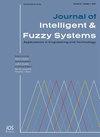基于方面词嵌入图卷积网络的情感分析方法研究
IF 1
4区 计算机科学
Q3 COMPUTER SCIENCE, ARTIFICIAL INTELLIGENCE
引用次数: 0
摘要
基于方面的情感分析是情感分析领域的一项细粒度任务。最近出现了各种GCN方法来解决这个问题,但是许多方法忽略了方面词信息和噪声的影响的关键作用。针对这种情况,我们提出了一种基于方面的词嵌入图卷积网络(AWEGCN)模型。为了更好地利用方面信息,区分对特定方面更重要的上下文信息,将方面信息嵌入到隐藏层的输出中。为了降低一个句子中出现多个方面词时的噪声影响,在经过双向图卷积网络后,对方面信息进行嵌入。通过注意机制计算特定的上下文表示,该机制用作最终分类特征。实验表明,我们的模型在5个公共数据集上取得了令人印象深刻的性能,我们还将BERT和XLNet预训练模型应用于该任务,并获得了验证我们模型有效性的高级结果。本文章由计算机程序翻译,如有差异,请以英文原文为准。
Research on sentiment analysis methods based on aspect word embedding graph convolutional networks
Aspect-based sentiment analysis is a fine-grained task in the field of sentiment analysis. Various GCN approaches have recently emerged to work on this, but many approaches ignored the critical role of aspectual word information and the effect of noise. In view of this situation, we propose an aspect-based word embedding graph convolutional network (AWEGCN) model. In order to make good use of the aspect information and distinguish the contextual information that is more important for a particular aspect, the aspect information is embedded in the output of the hidden layer. To reduce the noise effect when multiple aspect words appear in a sentence, after going through the bidirectional graph convolutional network, the aspect information is embedded. A specific contextual representation is computed through an attention mechanism, which is used as the final classification feature. Experiments show that our model achieves impressive performance on five public datasets, and we also apply BERT and XLNet pre-trained models to this task and obtain advanced results that validate the effectiveness of our model.
求助全文
通过发布文献求助,成功后即可免费获取论文全文。
去求助
来源期刊

Journal of Intelligent & Fuzzy Systems
工程技术-计算机:人工智能
CiteScore
3.40
自引率
10.00%
发文量
965
审稿时长
5.1 months
期刊介绍:
The purpose of the Journal of Intelligent & Fuzzy Systems: Applications in Engineering and Technology is to foster advancements of knowledge and help disseminate results concerning recent applications and case studies in the areas of fuzzy logic, intelligent systems, and web-based applications among working professionals and professionals in education and research, covering a broad cross-section of technical disciplines.
 求助内容:
求助内容: 应助结果提醒方式:
应助结果提醒方式:


